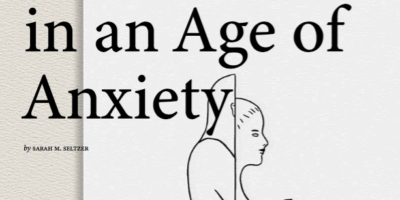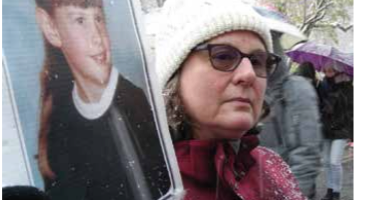Liana Finck on Her Shadow
New Yorker cartoonist Liana Finck details the struggle for acceptance of a weird kid in Passing for Human: A Graphic Memoir (Random House, $28), her new book. Leora, as Finck names her fictional self, uses her shadow as the symbol of her otherness.
Having been a weird kid myself, I could understand feeling that you’re an alien, and desperately wanting to pass for human, like the other kids. (Although, in Finck’s page “Elementary School Hierarchy,” in which she describes the levels of cool kids and uncool kids, I related most to the kid, “who didn’t want to be cool. She liked science fiction.”)
Desperate to belong, Leora chases away her shadow so she can pass for human, and everything is hunky dory until, as she becomes a teenager and then an adult, she realizes she has forgotten how to draw. Finck quotes Andrew Solomon, who himself is quoting from Hans Christian Anderson’s “Little Mermaid”:
“Her wish was granted: She became a human. The price was that every step she took was like walking on knives.”
Without our shadows, we may pass for human, but we are walking on knives. It was Liana/Leora’s shadow that made her a New Yorker cartoonist. Of course! Everyone with an ounce of talent was a weird kid!
But wait! We find out that Leora’s mother also lost, and found again, her shadow. And that she too had chased away her shadow, but for an entirely different reason! When the mother’s shadow finally returns to her, it still wears the long braid that the mother had cut off when she sent the shadow away. So, does the shadow represent more than the weirdness that makes us create? Don’t expect me to answer that question, because I admit I actually have no idea what Finck is suggesting.
Some years back, I had eagerly picked up and thoroughly enjoyed her first graphic novel, A Bintel Brief, because I knew about and was interested in the fabled advice column that had run in the Daily Forward newspaper during the early 20th century. Perhaps inspired by A Bintel Brief, Finck now contributes a hilarious online advice column to the New Yorker, “Dear Pepper.” (Pepper is a dog.)
Passing for Human is a horse of a different color. Longer, more complicated, and harder to figure out, even drawn in a vaguer art style, at least one panel was so amorphous that although I could make out two arms, I absolutely could not find the head that went with them.
If you dip a spoon into the pudding that is Passing for Human, you may pull out some delicious plums: a charming retelling of the creation myth with a female God, and later another retelling with a sympathetic female devil. A retelling of the story of Job, starring Leora’s father as Job. Best of all, a last section of the book narrated by Leora’s shadow, in which the blacks and whites are reversed, like negatives.
Though I liked A Bintel Brief better, plums like these make Passing for Human worth the struggle. TRINA ROBBINS, artist and cartoonist, is author/editor of The Complete Wimmen’s Comix, Last Girl Standing, and A Minyen Yidn.




